






















I find that through careful observation, the surface of water often looks more like a distorted space when we get close up to study it. The videos were recorded off the surface of the water when it is in motion reveal the constant changes of light’s path, showing that its route from its source to the camera is no longer that of a straight line, but of many polygonal lines that seem almost random. I capture the details of how light reflects off the surface of moving water to create abstract patterns. In a sense, the videos look similar to Pollock’s abstract painting as they show the effects of gravity on water molecules. However, the difference is that while Pollock swung a brush to fling pigment, his canvas was static and on the ground. In my videos, it is the light source that is static and the surface of water that keeps vibrating. Accordingly, the water surface is invisible; the viewer will sense the light go through a distorted space.














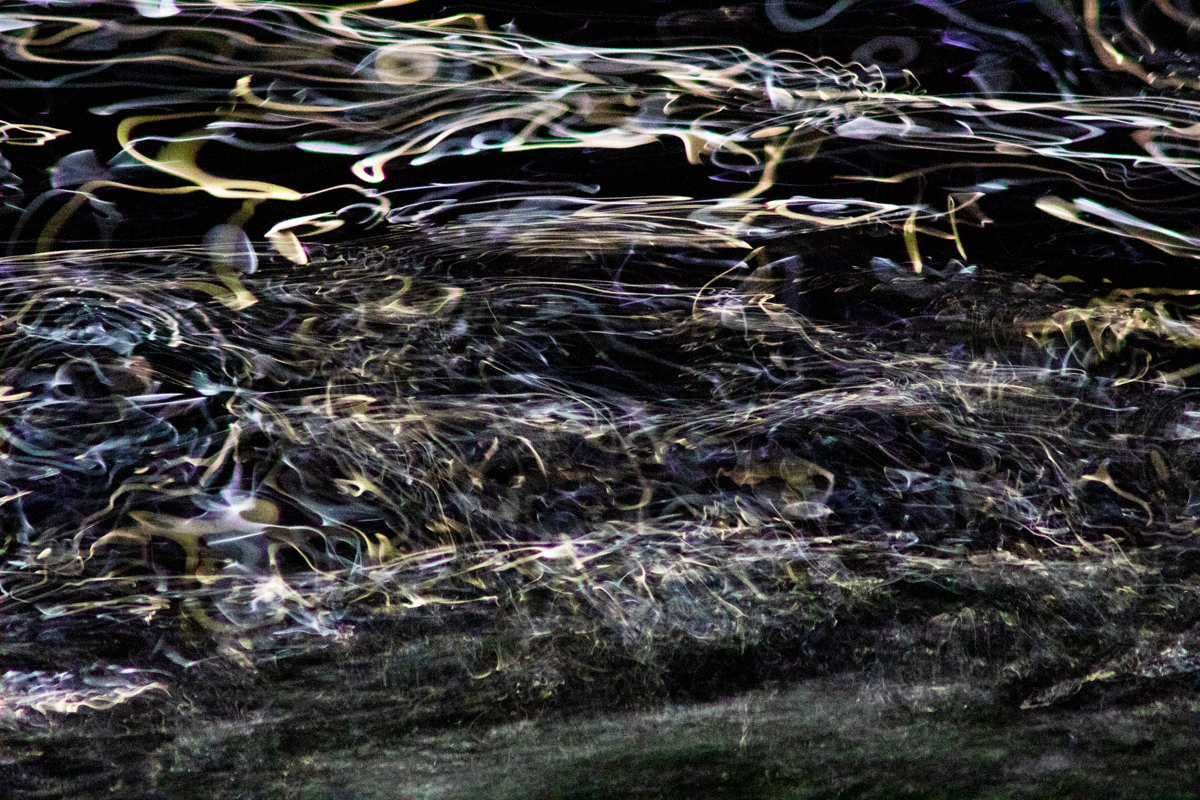






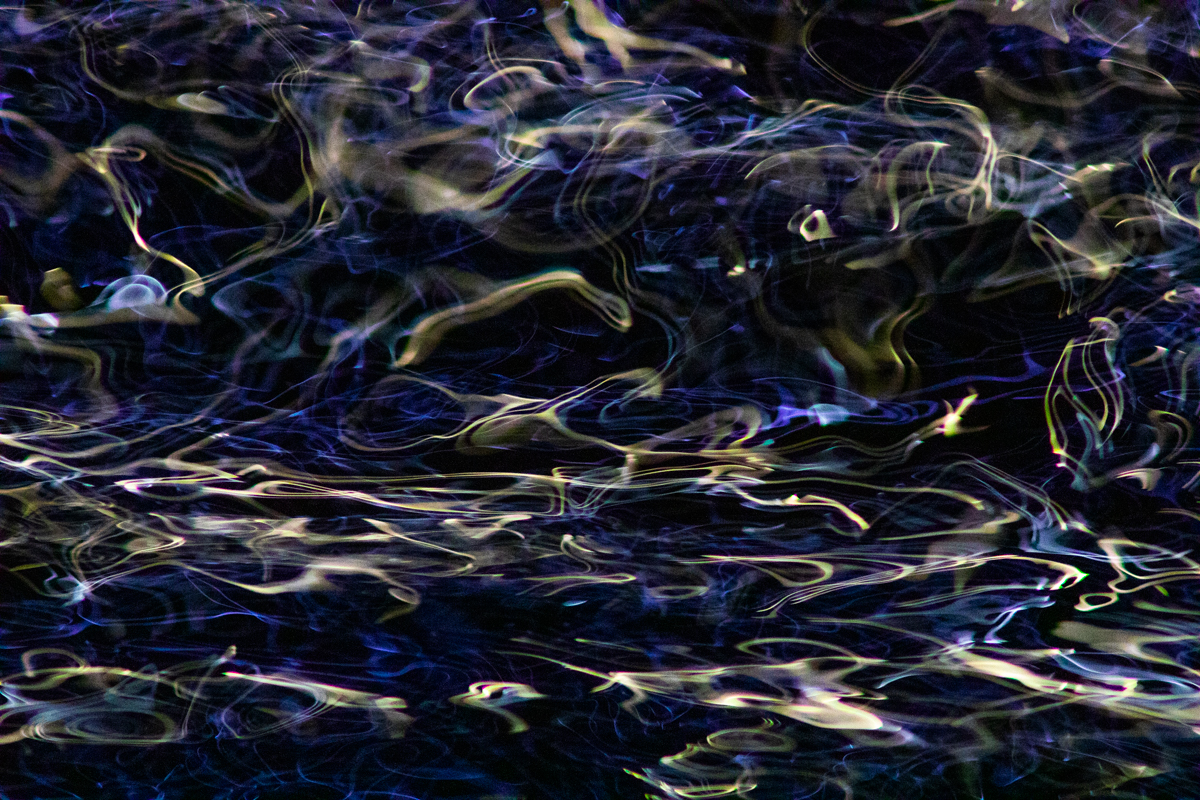







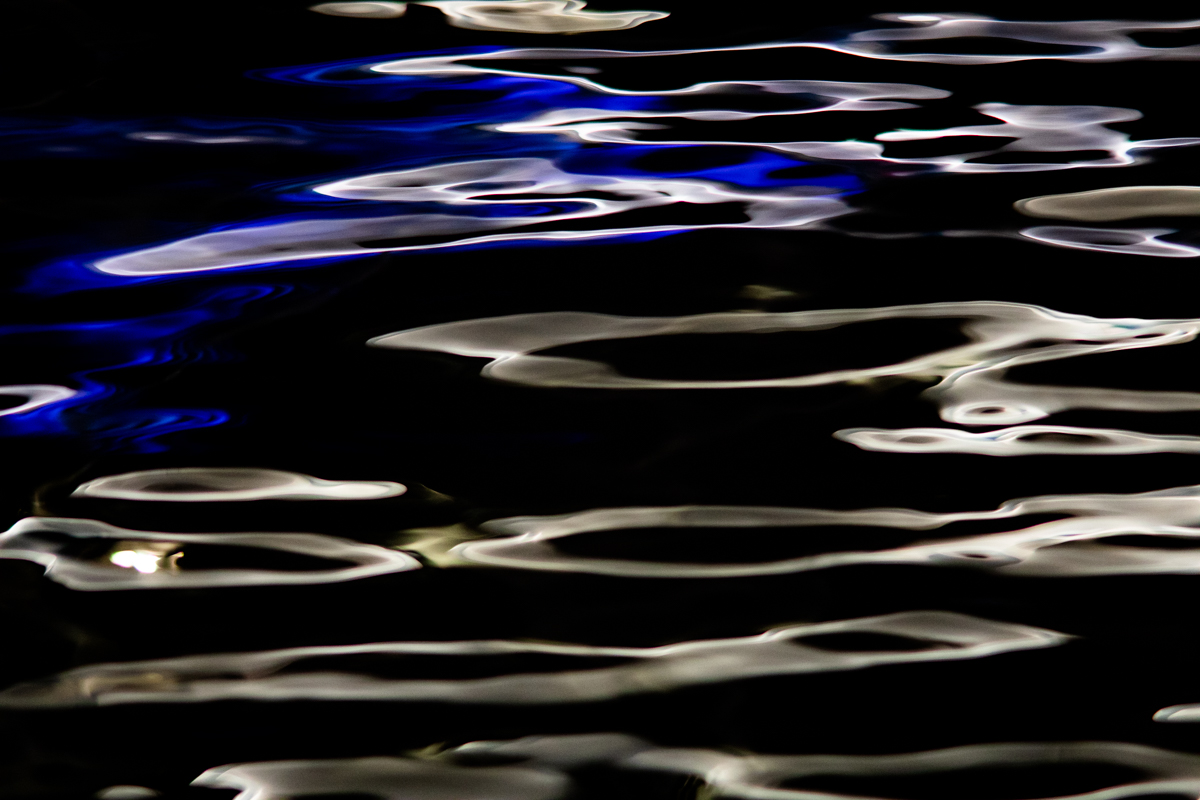














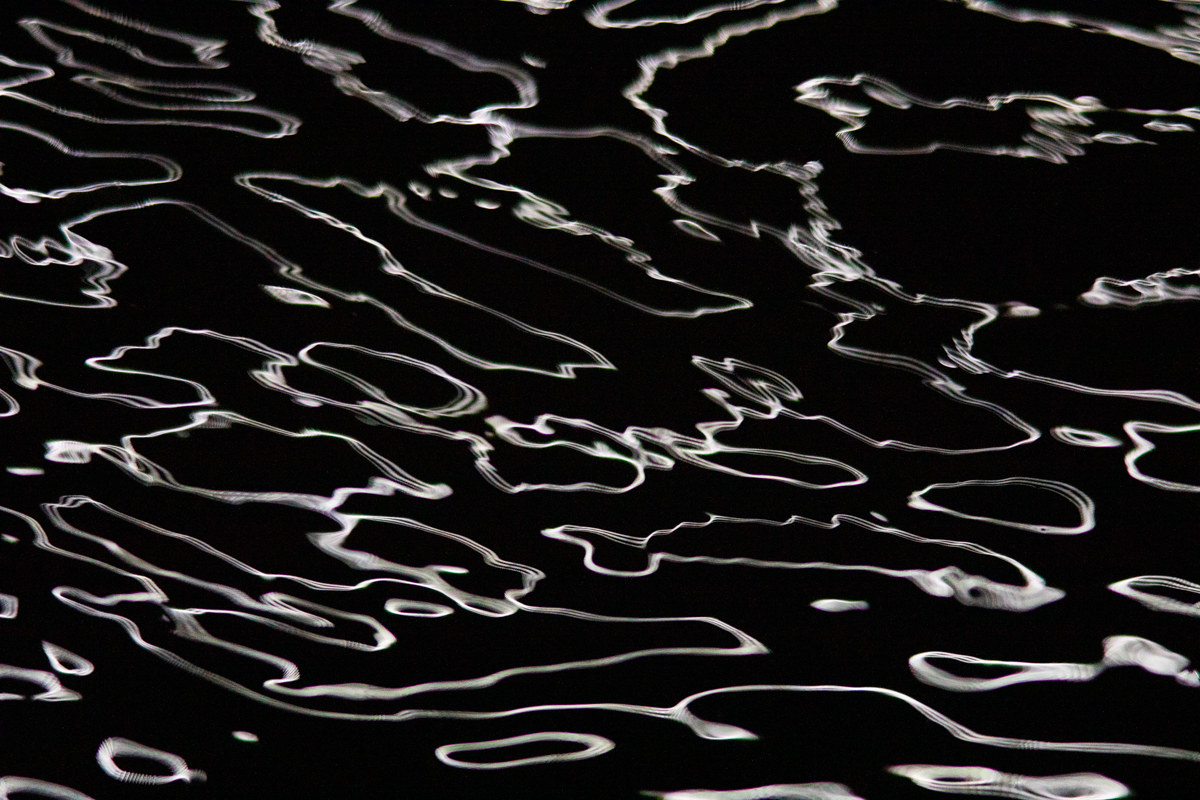



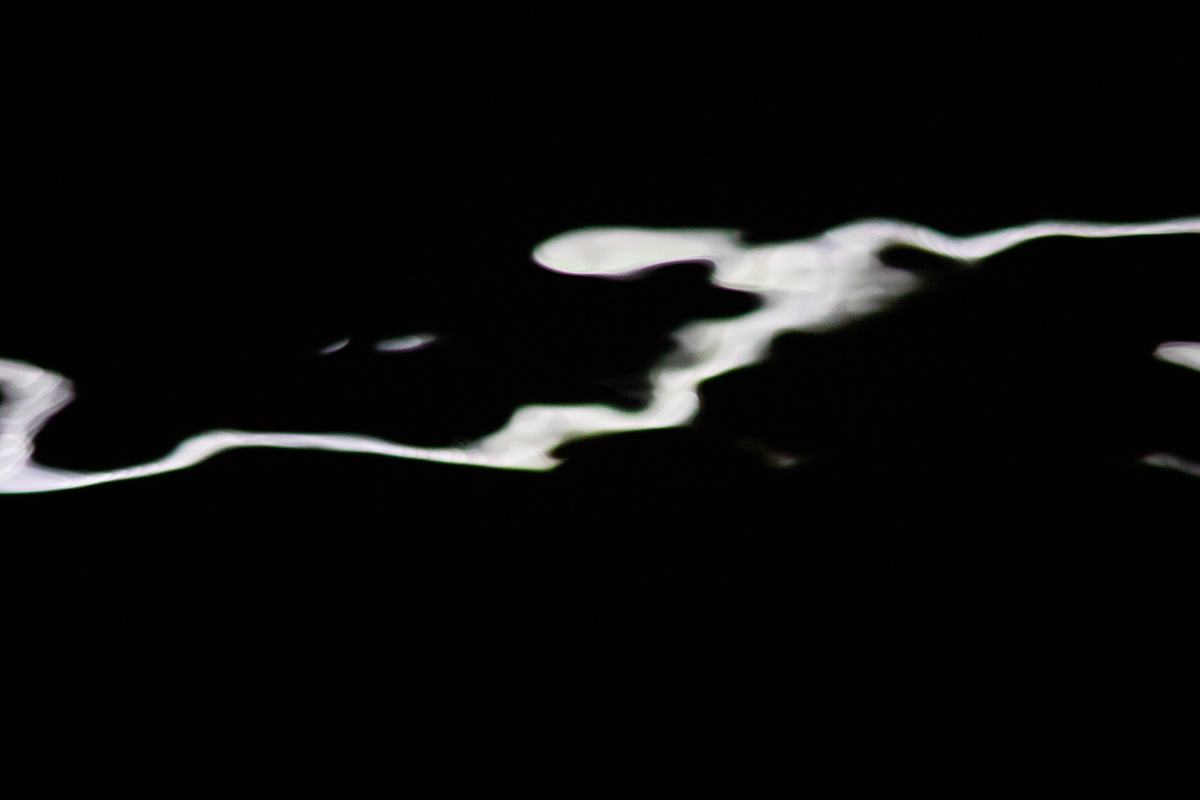








A Review by Natasha Chuk
Because of their intimidating incompressible force, character, and scale, black holes allude to a kind of void: an object, a space, or a situation that represents the truly unknowable. Recreating that aesthetic magnitude is a challenge Wen-Han Chang willingly accepts as he pays homage to the extraordinary celestial bodies in a series of photographic images aptly titled Black Hole.
Here, Chang deploys his signature photographic approach of using a camera not merely to see but to imagine and believe in something beyond what’s there. Utilizing the power of visual perception, he creates a series of photographic tests showing how the contours, colors, and poetics of reflecting light on the surface of water can enact an illusory effect in which the familiar surface transforms into an unknowable abstraction. These image studies show squiggles of spectral color set against a black, oil-slick background. Marks of white, pink, green, and blue light seem haphazardly drawn across each image, at once evoking an act of automatism and a glitch aesthetic. They have a quality of liveness, which signals both being caught between movements, like film stills, and imperceptibly moving, almost as if they are pulsating. At first glance, they easily recreate the effect of screens or projected images, partly unstable and perpetually animated. Altogether, the images appear kinetic and restless, as if caught between feverishly moving or dancing in an evasion of resolution. In this way, Chang’s images visually channel the action paintings of the abstract expressionists: Jackson Pollock’s dripped paint or Cy Twombly’s spiritually charged mark-making.
When viewed as a series, patterns across the group emerge and play narrative tricks. In some images, the twisted lines overwhelm the background, shifting from decorative to dominant and filling the space with pink, blue, and green. These colorful images are bookended with darker images, revealing a pattern that resembles the playful dissonance of music. The use of bold color acts as a temporary departure from the established starting point and return to darkness, with darkness assuming a kind of zero point. The shape of light shifts and swells, too: lines recall smoke, electric currents, even fire. The feeling of energy ebbing and flowing is experienced across and within each image. The effect of light hitting the surface of water appears tangible, like the direct animation—by scratching, painting—of experimental films. Stan Brakhage’s The Text of Light (1974) is a particularly apt comparison in its exploration of light falling on various surfaces. Like Brakhage, Chang studies the cumulative effect and poetics of the repetition of a single act, appreciating rhythm, uniformity, and the stimulation of variation.
As with Chang’s other bodies of work, Black Hole manages to transform optical distortion into a meditative viewing experience. Looking at these images, it is possible to imagine an accompanying aural mix: a soundscape comprising sounds of waves crashing and whistling wind contrasted by the eerie stillness of a motionless body of water. And because of the perceptual confusion these images cause, the sounds of static electricity and crackling fire figure into this imaginary acoustic medley. These images transport viewers somewhere familiar but altered. The surface of water acts as a substrate for the theater of activity produced by the visual effects of light engaged with Chang’s camera. The result is not as menacing and consuming as a black hole, but the effect of this series is nonetheless immersive and hypnotic.
— Natasha Chuk, New York City, February 2023
Natasha Chuk is a New York City-based, Latinx critical theorist and independent curator interested in media studies, film, experimental art, and creative technologies in a global context.